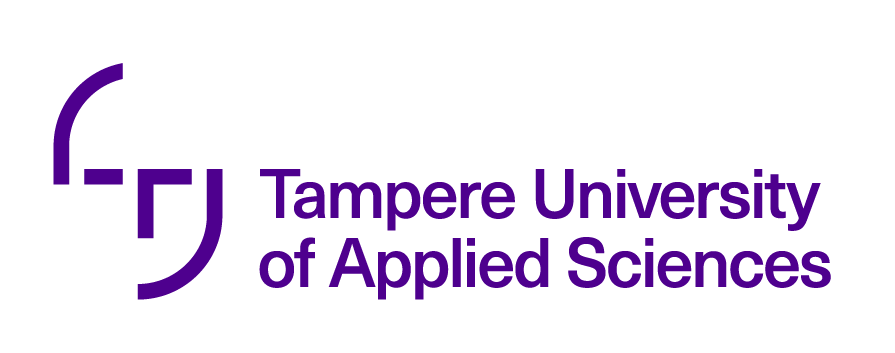Introduction to Municipal Engineering (5 cr)
Code: T300DH71-3012
General information
Enrolment period
01.07.2023 - 17.09.2023
Timing
31.08.2023 - 31.12.2023
Credits
5 op
Mode of delivery
Contact teaching
Unit
Construction Engineering
Campus
TAMK Main Campus
Teaching languages
- Finnish
Degree programmes
- Degree Programme in Construction Engineering
Teachers
- Johanna Plihtari-Siltanen
Person in charge
Johanna Plihtari-Siltanen
Groups
-
22RTA
-
22RTB
-
22RTC
-
22RTD
Objectives (course unit)
After completing the course, the student:
- be able to describe the importance of infrastructure to citizens and society,
infrastructure systems as part of the built environment, infrastructure of the communities
and factors affecting the operating environment of systems and their development
- can describe systems, actors and roles of the actors in the field of infrastructure
as well as the basic principles of building and maintaining systems and being sustainable
development goals
- be able to describe the mobility and transport needs, the transport system and the different modes of transport
and the basics of transport system design
- can present the bus infrastructure to structures, management, legislation, bus hierarchy
and the design system basics
Can explain the role of streets as a multi - mode mode of transport and different functions, and
as a location for water supply, energy and telecommunications networks
- can describe the main concepts and principles of water management, different system levels and their
interconnections and responsibilities for the organization and implementation of water services
- identify the type of expertise required in infrastructure engineering and its sub-sectors,
the importance of collaboration and the societal context of communities' technical systems
development and maintenance, as well as tasks in the industry.
Content (course unit)
1. Infrastructure engineering, infrastructure systems as part of the built environment,
the importance, security and economic impact of civil engineering on citizens and society,
connection to land use planning and town planning, influences on urban technology
social, economic and environmental objectives; community building and sustainable development -
infrastructure engineering actors, characteristics of infrastructure systems,
construction and maintenance principles, past and future, aging infrastructure
challenges: repair debt, maintenance resource scarcity and life cycle management, infrastructure engineering
related key jobs and prospects for the future engineer.
2. Transport and transportation systems, mobility and transport needs, demand for passenger and freight transport
and supply, the role of transport and transport in society, the transport system and
the key concepts and terms relating to fairway technology, the transport system and the various modes of transport,
modes and modes of transport as part of the transport system, sustainable and safe transport
transportation system; the main environmental, health and safety impacts of transport, to these
the related objectives and means of action, the basis for the design and development of the transport system,
goals and the different actors involved in the development of the future of the transport and transportation system
challenges and opportunities.
3. Transport infrastructure, transport infrastructure construction environment, operators and
stakeholders and legislation, transport infrastructure management and planning criteria,
fairway hierarchy and key concepts of fairway geometry, cross sections of roads, streets and railways; and
structural features, street features, and multi-purpose functionality
(different modes of travel, parking, etc.) and infrastructure and equipment under and over the street,
basics of road and street maintenance: winter and summer care and maintenance with ratings.
4. Water management systems and services, the value and importance of water management in society,
water supply system as a whole (domestic water, waste water, storm water), development of water supply as a part
communities, water circulation in communities, water supply institutions and stakeholders, water supply
strategic asset management, customer oriented water management, water management and
development and future challenges.
5. Recycling and waste management, waste management legislation, waste law priority order, key concepts:
reuse, recycling, recovery, waste categories, hazardous waste, construction waste,
material efficiency, circular economy, waste sorting, collection and transportation, waste treatment technologies,
waste treatment centers, disposal.
6. Energy and telecommunications networks, key energy and telecommunications networks in society,
from the point of view of the built environment and infrastructure engineering, network management and maintenance
(national networks, underground cables, district heating networks, gas lines, etc.).
Instructions for students to achieve proficiency levels:
The grade of the course is determined by the part-time credit made during the course. Each
partial payment must be made in a satisfactory manner. Achieving grade 3 requires a course
good control over core content.
Assessment criteria, satisfactory (1-2) (course unit)
The grade of the course is determined by the part-time credit made during the course. Each
partial payment must be made in a satisfactory manner. A grade of 1-2 is required
basic knowledge.
Assessment criteria, good (3-4) (course unit)
The grade of the course is determined by the part-time credit made during the course. Each
partial payment must be made in a satisfactory manner. Achieving grade 3 requires a course
good control over core content.
Assessment criteria, excellent (5) (course unit)
The grade of the course is determined by the part-time credit made during the course. Each
partial payment must be made in a satisfactory manner. Achieving grade 5 requires a course
versatile and in-depth control of core content.
Assessment scale
0-5
